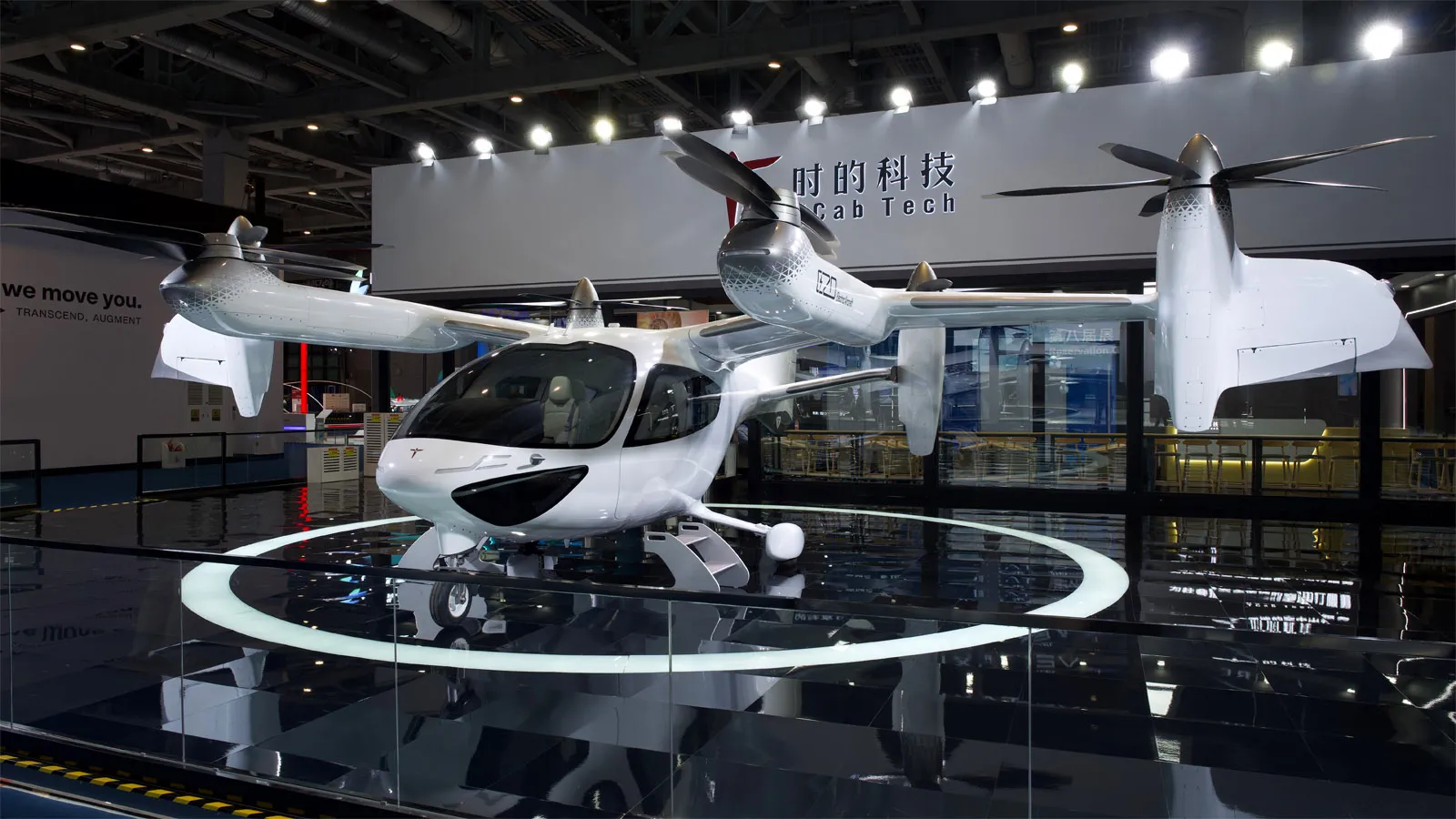The world of transportation is on the brink of a major transformation. Flying taxis, once relegated to science fiction, are rapidly becoming a tangible possibility. With major advancements in electric vertical takeoff and landing (eVTOL) technology, 2025 could be the year when these futuristic vehicles begin to take to the skies in significant numbers. The concept of flying taxis promises to revolutionize how we move around cities, offering a faster, more efficient alternative to traditional road transportation.
This article delves into the exciting world of flying taxis, exploring the technological breakthroughs that are making them possible, the challenges they face, and the potential impact they could have on urban mobility.
The Rise of eVTOL Technology
Flying taxis are built on the concept of electric vertical takeoff and landing (eVTOL) aircraft, which are designed to take off and land vertically, similar to a helicopter, but with the added advantage of being fully electric. This technology allows eVTOLs to operate in urban environments, where space for traditional runways is limited.
Key Features of eVTOL Aircraft
- Electric Power: eVTOLs are powered by electric engines, reducing their carbon footprint compared to traditional aircraft.
- Vertical Takeoff and Landing: The ability to take off and land vertically means these vehicles don’t require large runways, making them ideal for crowded cities.
- Urban Mobility: These aircraft can be used for short urban flights, alleviating congestion on the roads and reducing travel times.
This innovative design positions eVTOLs as a promising solution to the challenges posed by urban transportation, which is often plagued by traffic congestion and long commutes.
The Pioneers of Flying Taxis
Several companies around the world are vying to bring flying taxis to the market, with many targeting 2025 as the year they hope to launch commercial services. These companies are investing heavily in research and development to make flying taxis a reality.
Major Players in the Flying Taxi Industry
- Joby Aviation: One of the leading companies in the eVTOL sector, Joby Aviation has made significant progress in developing its aircraft, which has successfully completed numerous test flights.
- Lilium: Based in Germany, Lilium is developing a unique eVTOL aircraft that promises to carry passengers at high speeds over longer distances than many of its competitors.
- Volocopter: Volocopter is another major player in the flying taxi market, focusing on developing aircraft designed for urban air mobility.
- Archer Aviation: This US-based company is working on electric aircraft that can carry passengers in busy cities, offering a more sustainable form of air transportation.
These companies, along with several others, are working tirelessly to perfect the technology and infrastructure necessary to make flying taxis a viable option for urban transportation.
The Technology Behind Flying Taxis
Flying taxis rely on cutting-edge technology to ensure they are safe, efficient, and capable of operating in crowded urban environments. The main components that make flying taxis possible include:
Electric Propulsion Systems
The heart of any eVTOL aircraft is its propulsion system. Traditional aircraft rely on combustion engines, which are heavy and inefficient. In contrast, eVTOLs use electric motors powered by batteries, making them lighter, quieter, and more environmentally friendly.
Autonomous Flight Capabilities
Many flying taxi companies are also working on developing autonomous flight systems. These systems would allow eVTOLs to operate without a pilot, relying on advanced sensors, GPS, and artificial intelligence to navigate the skies. Autonomous flight technology would not only reduce operating costs but also enhance safety by minimizing human error.
Advanced Batteries
One of the key challenges facing flying taxis is the need for lightweight, high-capacity batteries that can power electric motors for long enough to make commercial flights viable. Current battery technology is still evolving, but significant progress is being made in improving energy density and charging times, making it more feasible to operate flying taxis on a regular basis.
The Challenges Facing Flying Taxis
While the promise of flying taxis is exciting, there are several significant challenges that must be overcome before they can become a mainstream mode of transportation.
Regulatory Hurdles
The introduction of flying taxis requires extensive regulatory approvals from aviation authorities around the world. These regulations will cover everything from flight safety and airspace management to noise pollution and environmental impact. Government agencies are working closely with flying taxi companies to establish the necessary guidelines to ensure that eVTOLs can safely operate in urban airspace.
Infrastructure Development
For flying taxis to become a practical mode of transportation, cities will need to develop a new infrastructure to support them. This includes the construction of “vertiports,” which are specialized landing and takeoff areas for eVTOLs. These vertiports will need to be strategically located throughout cities to ensure that flying taxis can operate efficiently.
Public Perception and Acceptance
Another hurdle is public acceptance. While the idea of flying taxis is exciting, many people are still skeptical about their safety and practicality. Overcoming this skepticism will require rigorous testing, transparency, and education about the benefits and safety features of eVTOLs.
Safety Concerns
Safety is paramount when it comes to flying taxis. Passengers must be assured that these vehicles are as safe, if not safer, than traditional forms of transportation. Rigorous testing, fail-safe systems, and regular maintenance will be essential to ensure that flying taxis can operate safely in densely populated areas.
The Potential Impact of Flying Taxis on Urban Mobility
The advent of flying taxis could have a profound impact on the way people move around cities. Here’s a look at some of the potential benefits they could offer:
Alleviating Traffic Congestion
One of the most immediate benefits of flying taxis is the potential to alleviate traffic congestion. In major cities where road traffic is often gridlocked, flying taxis could provide a faster, more direct route to a destination. By taking to the skies, eVTOLs would reduce the number of vehicles on the road, easing congestion and improving overall traffic flow.
Reducing Carbon Emissions
Flying taxis could play a significant role in reducing urban carbon emissions. By using electric power instead of fossil fuels, eVTOLs could help cut down on air pollution in cities, making urban environments cleaner and healthier.
Increased Efficiency in Urban Transportation
With the ability to bypass traditional roads, flying taxis could dramatically reduce travel times. What would typically take 30 minutes by car could be completed in just a few minutes by air. This increased efficiency could benefit both individuals and businesses, improving productivity and quality of life in urban areas.
The Future of Flying Taxis
As the technology continues to evolve and regulatory frameworks are established, flying taxis could become a regular part of city life by the mid-2020s. Companies like Joby Aviation, Lilium, and Volocopter are pushing forward with their plans, and several test flights have already been successfully completed.
The future of flying taxis looks promising, but it will require continued innovation, investment, and collaboration between industry leaders, regulators, and city planners to make it a reality. By 2025, we may see the first commercial flights of flying taxis, but full-scale deployment could take several more years as the technology matures and the infrastructure is built.
Final Thoughts
The concept of flying taxis is no longer just a futuristic dream—it’s becoming a reality. With advancements in eVTOL technology, flying taxis could be taking off in cities around the world as early as 2025. While there are still many challenges to overcome, the potential benefits they offer in terms of reducing traffic, lowering emissions, and increasing urban mobility make them an exciting development in the field of transportation.
As we move closer to a world where flying taxis are a part of everyday life, we can only imagine how they will transform the way we travel, reshaping urban landscapes and redefining what it means to commute.





Leave a Comment